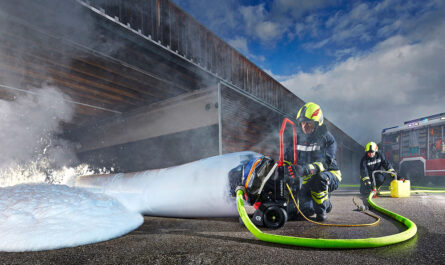Composite materials are made from two or more constituent materials with significantly different physical or chemical properties that, when combined, produce a material with characteristics different from the individual components. The individual components remain separate and distinct within the finished structure. In terms of sports equipment, fiberglass, carbon fiber, and Kevlar are some of the most widely used composite materials due to their high strength-to-weight ratio and impact resistance.
Advantages of Using Composites in Sports Gear
Sports Composites offer numerous benefits over traditional materials when used to manufacture sports equipment. Their lightweight yet durable nature makes them ideal for gear where weight is crucial. With composites, manufacturers can develop racquets, bicycle frames, protective equipment and more that are stiff enough for optimal performance but remarkably lightweight compared to their metal or wood counterparts. The precise engineering of composites also allows for aesthetically pleasing design freedoms not possible with other materials.
Composite Materials in Tennis Racquets
One of the earliest adoptions of composites in sport was in tennis racquet construction. Fiberglass and later carbon fiber gave racquet builders opportunities to alter key performance factors like swing weight, stiffness, balance, and vibrancy. Today’s pro racquets are ultra-light yet remarkably strong due to composites. Different materials and weaves allow tuning the feel and power delivery for specific playing styles. While an all-carbon racquet might be too stiff for a beginner, composites have enabled gear tailor-made for players of all abilities.
Carbon Fiber in Bicycle Frames and Components
Bicycle frames were revolutionized with the use of carbon fiber Sports Composites. From high-end road bikes to mountain bikes and time trial frames, carbon has become the material of choice for serious cyclists seeking a perfect balance of low weight, aerodynamics, impact resistance and ride damping. Individual frame tubes can be molded into complex shapes for aerodynamic advantages while remaining strong and light. Components like seatposts, handlebars, wheels, and even bottom brackets are now being made from carbon fiber composites for enhanced durability and performance.
Protective Gear: Helmets, Guards, and Body Armor
The use of composites has significantly improved protection levels in various impact sports. Fiber-reinforced plastics offer headgear manufacturers opportunities to develop lightweight helmets that can withstand high-deceleration impacts through strategically placed layers. Mouthguards, shin guards, baseball batting helmets and body armor for sports like hockey, cycling, and lacrosse leverage the energy-absorbing properties of composites. The material is moldable, sanitary and more comfortable than foams and plastics traditionally used. Composites allow protective designs optimized for a given sport while maintaining ventilation and flexibility.
Composite Materials in Golf Clubs
Golf equipment making is another area where composites have enabled immense strides. Fiberglass and carbon fiber composite materials allow for precisely engineered clubhead designs with complex interior structures. Club face thickness, flexure, weighting, and moments of inertia affecting ball flight can be manipulated through layering of different composite fibers. Shaft materials have also transitioned to composites, providing consistent performance regardless of weather along with custom tuning options. Overall, composites improve accuracy, distance, feel and forgiveness for golfers across skill levels.
Advancements through 3D Printing and New Materials
Advancing manufacturing technologies continue driving further use of composites in sports. 3D printing now facilitates production of intricately designed composite parts and even final products with embedded electronics or moving pieces. Researchers are also exploring new materials like graphene composites promising ultralight strength. On the innovation front, technologies like variable-stiffness carbon fiber could lead to “smart” sports gear automatically responding to playing conditions. The future potential seems limitless as material science matures alongside digital design tools enabling bespoke optimization of every component for peak performance.
sports composites materials have revolutionized sports equipment design and manufacturing over the past few decades. Their high strength-to-weight ratio, strength, durability, customizable properties, and production scalability make them ideal for developing high-performance gear. Composites have benefited players across all skill levels by enabling equipment formulations best suited for individual playing styles. Continuous material science advancements promise further innovations maximizing an athlete’s natural abilities. Going forward, composites will likely remain the predominant material used to build cutting-edge sports gear.
*Note:
1. Source: Coherent Market Insights, Public Source, Desk Research
2. We have leveraged AI tools to mine information and compile it.
About Author - Ravina Pandya
Ravina Pandya,a content writer, has a strong foothold in the market research industry. She specializes in writing well-researched articles from different industries, including food and beverages, information and technology, healthcare, chemicals and materials, etc. With an MBA in E-commerce, she has expertise in SEO-optimized content that resonates with industry professionals. LinkedIn Profile

 by
by 


